Lesson summary
Students will explore how energy is incorporated into the process of separating recyclable and non-recyclable materials. They will identify different energy forms used in a Materials Recovery Facility. Students will then demonstrate their understanding by comparing the energy consumption of new bottle production to recycled bottle production.
Learning intentions:
Students will...
- continue to develop their understanding of the resources used in manufacturing a plastic bottle
- compare the energy involved in creating a plastic bottle with new or recycled materials.
Success criteria:
Students can...
- identify types of potential and kinetic energy used in the manufacturing process for a plastic bottle
- explain how scientific knowledge is used to support recycling as a sustainable process.
Lesson guides and printables
Curriculum links
Select your curriculum from the options below.
Lesson details
Skills
This lesson is designed to build students’ competencies in the following skills:
- critical thinking
- collaboration
- communication
- ethical understanding
- reflection
Curriculum Mapping
Australian Curriculum (v9.0) content description: Year 8, Science
Students learn to
- classify different types of energy as kinetic or potential and investigate energy transfer and transformations in simple systems (AC9S8U05)
- explore the role of science communication in informing individual viewpoints and community policies and regulations(AC9S8H04)
- examine how proposed scientific responses to contemporary issues may impact society and explore ethical, environmental, social and economic considerations (AC9S8H03).
Relevant parts of Year 8 achievement standards: Students compare different forms of energy and represent the transfer and transformation of energy in simple systems. They analyse the key considerations that inform scientific responses and how these responses impact society. They also analyse the importance of science communication in shaping viewpoints, policies, and regulations.
Current NSW Syllabus outcomes:
A student:
- describes the action of unbalanced forces in everyday situations (SC4-10PW)
- discusses how scientific understanding and technological developments have contributed to finding solutions to problems involving energy transfers and transformations (SC4-11PW).
General capabilities: Critical and Creative Thinking, Ethical Understanding, Literacy
Cross-curriculum priority: Sustainability
Level of teacher scaffolding: High: Explicit teaching or concepts and guiding student discussion.
UN Sustainable Development Goals
UN SDG 12: Ensure sustainable consumption and production patterns
- Target 12.5: By 2030, substantially reduce waste generation through prevention, reduction, recycling and reuse.
Resources Required
- Device to display media to the class
- The Energy of Recycling Flowchart
- Student Worksheet ( 1 per student)
Additional Info
This lesson has been developed in partnership with Visy. For over 70 years, Visy has been committed to finding sustainable solutions for Australia's and New Zealand’s recyclables and helping to reduce local landfills. Visy collects, receives, and sorts paper, cardboard, glass, plastics, steel, and aluminium from households, businesses, and schools to reuse these products and re-manufacture new packaging products.
Related Professional Learning
Fit Sustainability Into the Secondary Curriculum
Quick Summary: In this course, you will learn a holistic definition of sustainability, which goes beyond compost bins and solar panels and how to embed sustainability concepts to enrich your current curriculum without it being an add-on.
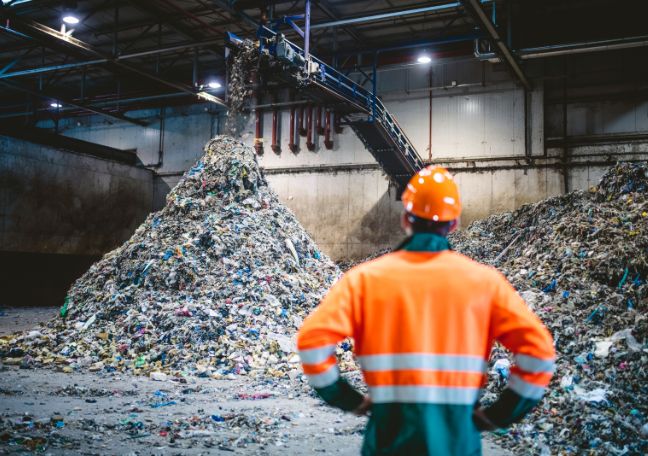
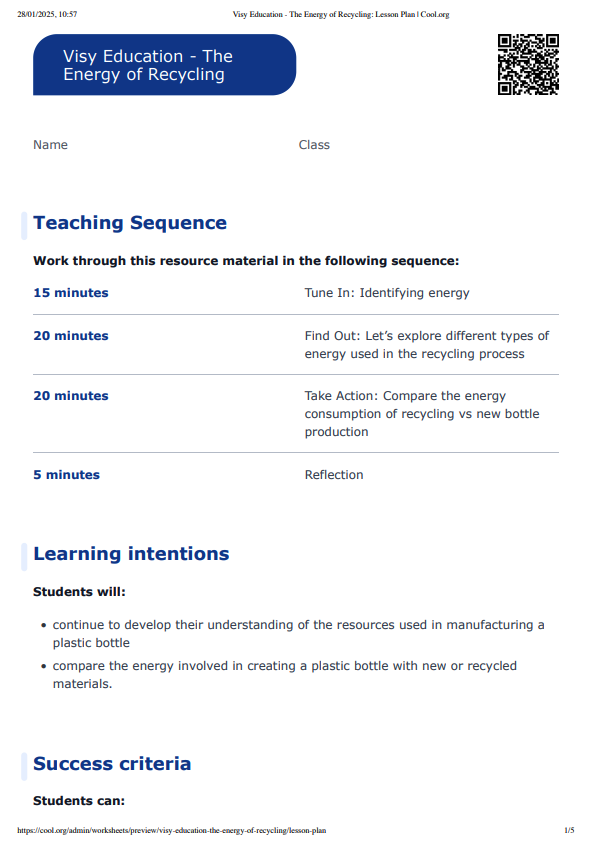
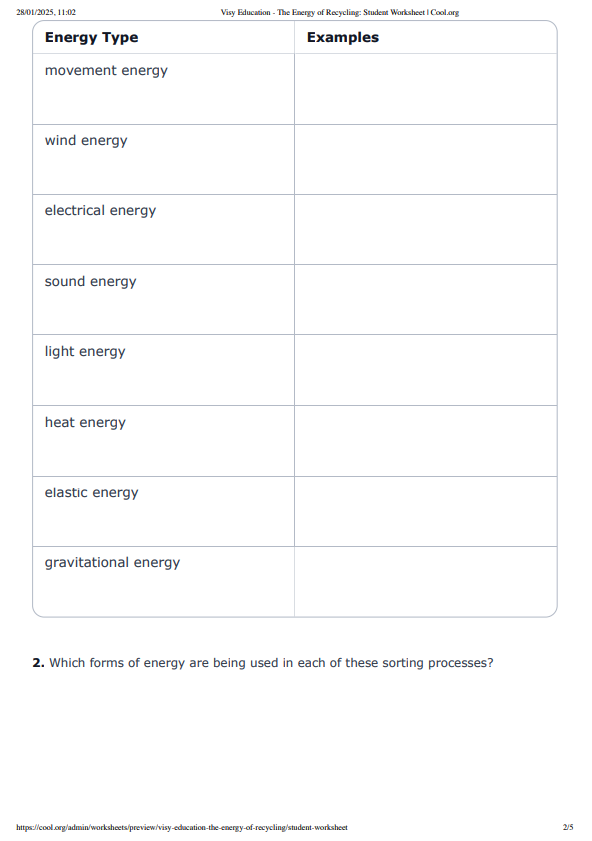
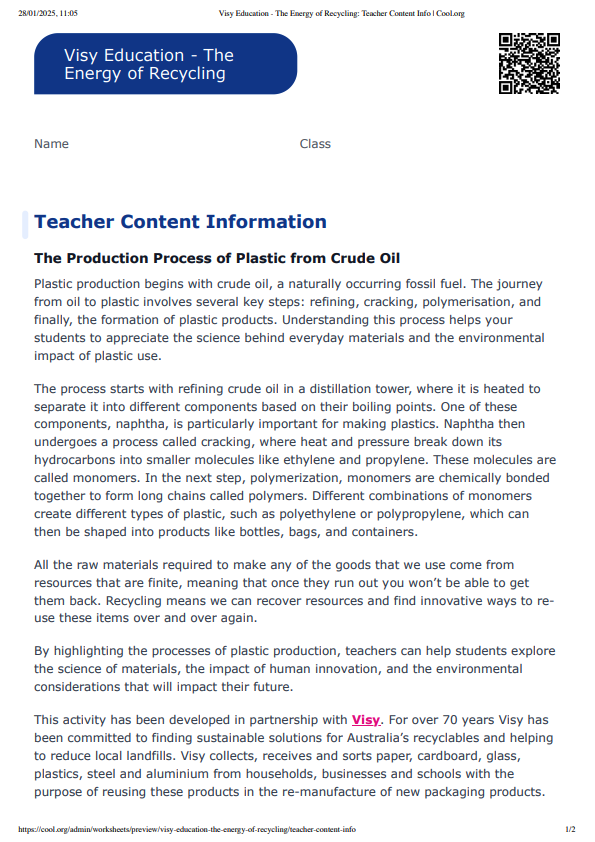
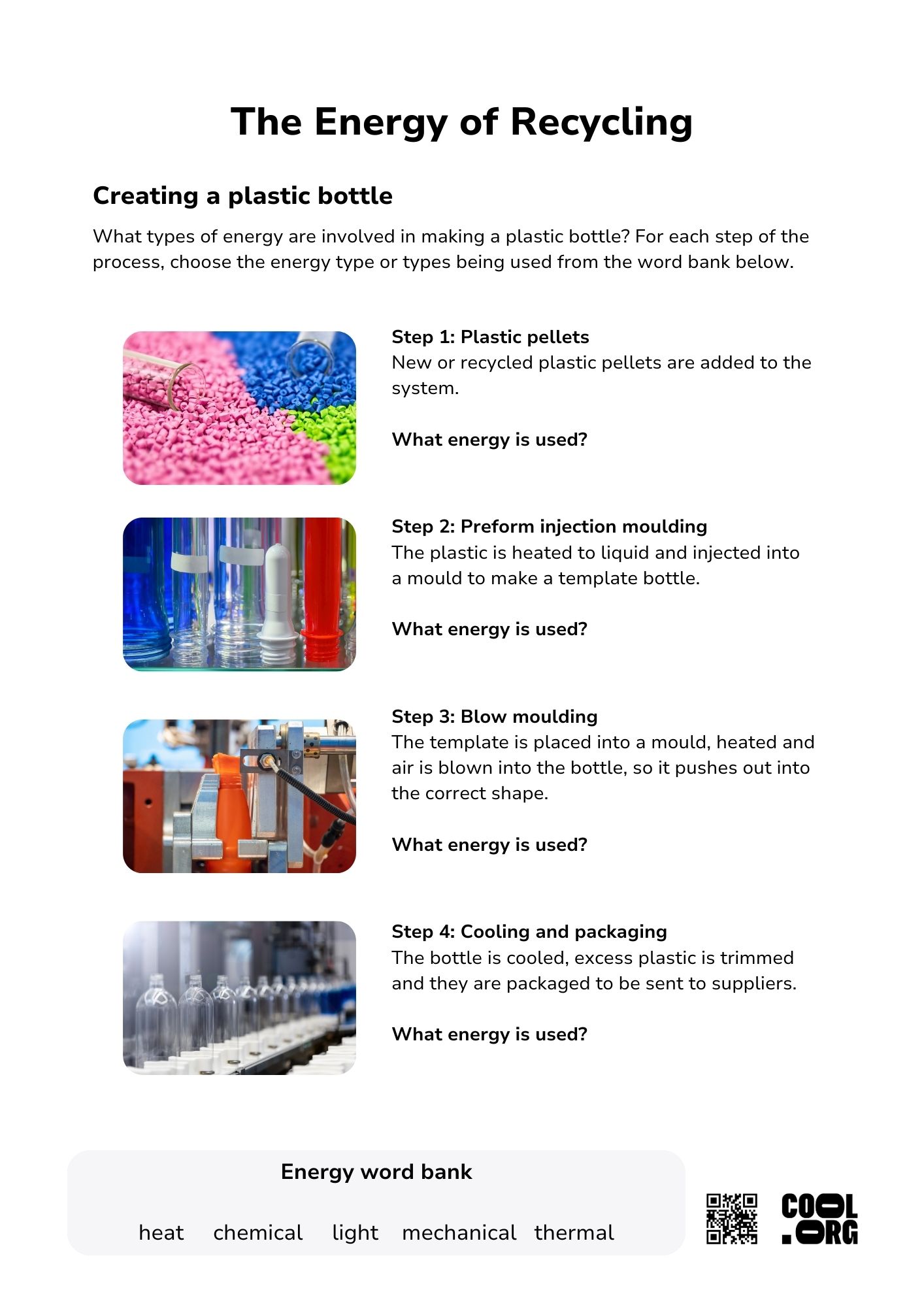
Welcome back!
Don't have an account yet?
Log in with:
Create your free Cool.org account.
Many of our resources are free, with an option to upgrade to Cool+ for premium content.
Already have an account?
Sign up with:
By signing up you accept Cool.org's Terms and Conditions(Opens in new tab) and Privacy Policy(Opens in new tab).